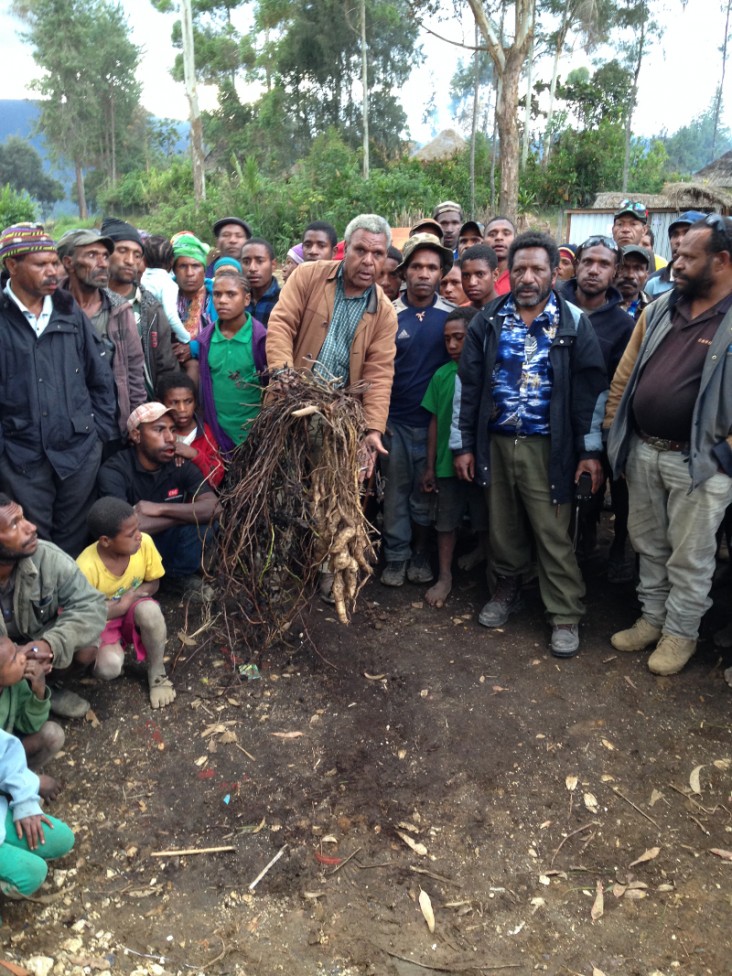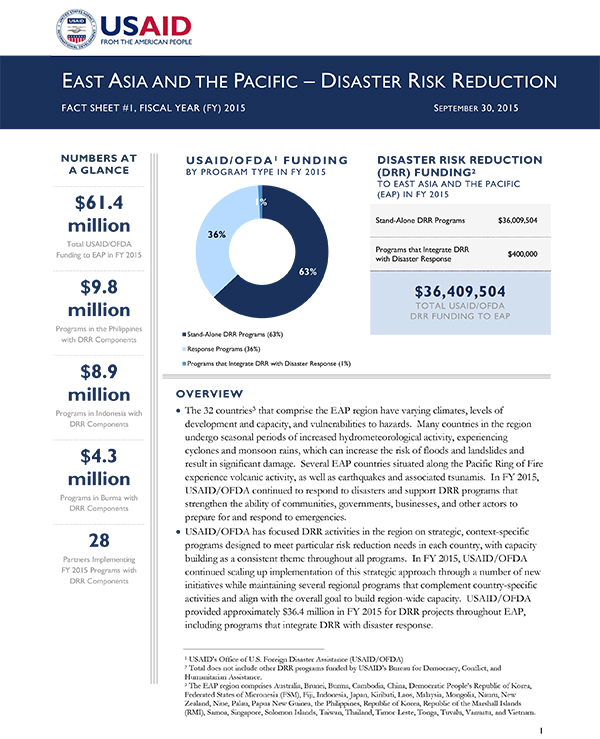- What We Do
- Agriculture and Food Security
- Democracy, Human Rights and Governance
- Economic Growth and Trade
- Education
- Ending Extreme Poverty
- Environment and Global Climate Change
- Gender Equality and Women's Empowerment
- Global Health
- Water and Sanitation
- Working in Crises and Conflict
- Disaster Assistance
- Political Transition Initiatives
- Conflict Mitigation and Prevention
- Countering Violent Extremism
- Disaster Risk Reduction
- Peacebuilding and Reconciliation
- Providing Safe & Secure Environments for Development
- Recovering From Crisis
- Resilience
- Tech Challenge for Atrocity Prevention
- World Humanitarian Day
- U.S. Global Development Lab

Latest Regional DRR Fact Sheet
Key Developments
In August 2015, frost in high-elevation areas of Papua New Guinea, including parts of Enga, Hela, Southern Highlands, and Western Highlands provinces in the Highlands Region, caused widespread damage to sweet potato crops—the country’s primary staple and an important source of food and income for many families. Additionally, areas throughout Papua New Guinea, particularly in the Highlands Region, experienced decreased precipitation throughout 2015 that resulted in water shortages and highlighted the need for improved water, sanitation, and hygiene (WASH) practices, including the treatment and storage of drinking water. As of early September, the Government of Papua New Guinea estimated the frost and drought—both associated with the 2015–2016 El Niño phenomenon—had affected more than 1.8 million people.
On September 15, U.S. Ambassador Walter E. North declared a disaster in Papua New Guinea due to the effects of the frost and drought. In response, USAID’s Office of U.S. Foreign Disaster Assistance (USAID/OFDA) provided $100,000 to the International Organization for Migration through USAID/Philippines to support agriculture and WASH interventions.
Background
Papua New Guinea, located in the southwestern Pacific, is prone to many natural disasters, including cyclones, drought, earthquakes, floods, landslides, tsunamis, and volcanic eruptions. When disaster strikes Papua New Guinea, USAID/OFDA works with non-governmental organizations, international organizations, and the UN to meet humanitarian needs and complement government relief efforts. In addition to responding to disasters, USAID/OFDA supports a number of initiatives to build capacity for disaster response in Papua New Guinea and the larger East Asia and the Pacific region.









Comment
Make a general inquiry or suggest an improvement.